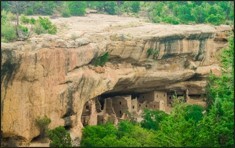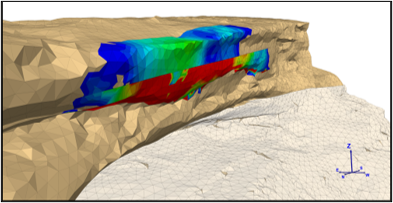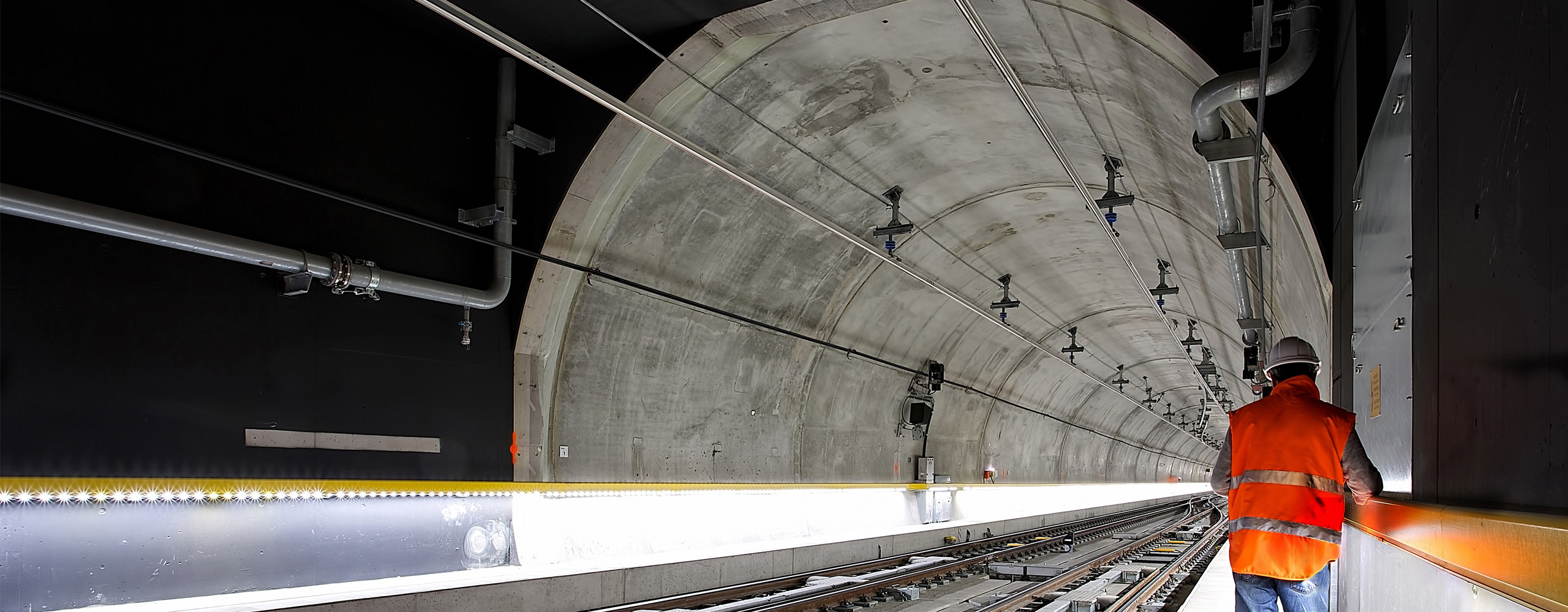Spruce Tree House Arch Stabilization, Mesa Verde National Park
Project Description
Mesa Verde National Park, located in southwestern Colorado, is the site of Spruce Tree House Alcove, which is the third largest and best-preserved cliff dwelling in the Park. The Spruce Tree House cliff dwelling was constructed around 800 years ago in a naturally formed alcove about 216 ft wide by 89 ft deep.
The nose of the alcove contains a thin arch delineated by a persistent curved crack (called Richardson crack), which extends approximately 270 ft north from above the south end of the alcove. The crack is up to several feet wide, and the arch cross section is roughly 10 ft thick by 20 ft high. An investigation in the 1960s led to a stabilization program that included rockbolts and a thorough cleaning and grouting of the crack.
Recently, however, rockfalls from the arch and adjacent rock surfaces have shown the need for a new assessment of arch stability and additional support efforts.
ITASCA's Role
ITASCA was retained by the U.S. National Park Service to investigate the arch and conduct a stability assessment (including three-dimensional numerical modeling for several remediation options identified by ITASCA), recommend the preferred option, and estimate construction costs. The site investigation included shallow coring, surveying joint locations, crack monitoring, and joint characterization near Spruce Tree House Alcove.
Project Results
A 3DEC model was developed based on the geometry from a LIDAR survey and estimations of the crack geometry in the arch developed from the site investigation. The initial mechanical properties used for the intact rock and the local arch were derived from lab test results. The model was calibrated, meaning sandstone strength properties were adjusted so that the arch was stable ignoring the presence of the 1960s rockbolts. Once the model was calibrated, several new rockbolt configurations were simulated to determine a practicable remediation solution. After installation of the rockbolts, with the chosen configuration, the arch was predicted to be stable up to a Strength Reduction Factor (SRF) of 3.
References
Brose, A., Loy, A., Peterson, L., Mason, J.A., & Peterson, R. (2018). Supporting A National Treasure: Spruce Tree House Alcove Arch Stabilization. GeoStrata Magazine, 22(6), https://doi.org/10.1061/geosek.0000236.



